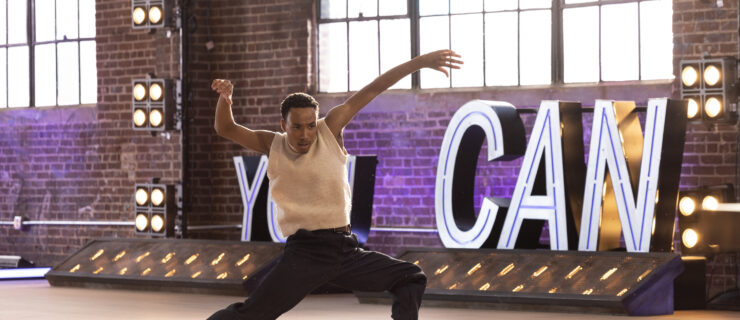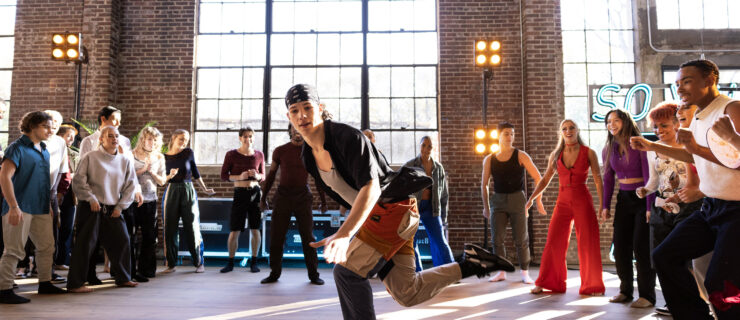A Chance To Dance is Giving Children of All Abilities an Opportunity to Dance
Kim Smith has been a dancer for most of her life. And now, she wants to make sure that anyone who wants to dance, can. Her program A Chance To Dance offers differently abled children the opportunity to express themselves through dance. “Dance is one of the most beautiful forms of communication and these children and teens need to be able communicate without having to use words,” Smith told Dance Spirit. Three years after creating this inclusive dance program, Smith’s students aren’t just communicating, they’re competing. The program has grown to include Senior, Junior, and Mini comp teams—A Chance To Dance students even competed at Worlds, placing in the top 10. But for Smith, it’s not about the titles or the awards. “I’m all about breaking down barriers,” Smith says. Read our interview with Smith below to find out how A Chance To Dance is further redefining dance culture norms.
Your browser does not support the video tag.
What inspired you to start A Chance To Dance?
My youngest daughter Regan is on the autistic spectrum, and I was trying to find things she could do outside of therapy where she could be exposed to other kids. After struggling to find a dance program that would work for her I created a post on Facebook explaining that I wanted to find a dance studio that would donate some space so that I could create a program for differently abled children. Donna Mitzel was a studio owner and taught my older daughter dance and she messaged me and said “Tell me what you need. Lets do this.”
We started in September 2015 with seven students, myself, and one volunteer. It began as a very simple introduction to music and movement. One year later, we had grown to 20 students and now we’re in our third year and have 60 students enrolled. We now offer a recreational program and a competitive program with three different competitive teams.
What does A Chance To Dance do differently than most other dance programs?
What makes A Chance to Dance unique, and what’s made this program explode and grow the way that it has, is the fact that we don’t turn anyone away. We have children with cerebral palsy, autism, and down syndrome. We have little people. We have a boy with prosthetic limbs. We have a child that is almost completely blind. We take every child into account and choreograph so that the dances work for everybody. We just find a way to make the dances work for everyone because everybody has something to offer.
 Jessa Whipple is a member of A Chance to Dance’s Mini Novice competition team (photo by Sarah Nelson Conklin, courtesy Smith)
Jessa Whipple is a member of A Chance to Dance’s Mini Novice competition team (photo by Sarah Nelson Conklin, courtesy Smith)
What do you hope people who are involved with A Chance To Dance take away from the experience?
As far as the students go, our biggest goal is to give them the opportunity to truly feel alive, and to see what it’s like to be a part of something—to be apart of team. Whether they’re a part of the competitive dance team or in one of the recreational dance classes, these kids get to experience what it feels like to get excited and have something to look forward to every week. They get to have social opportunities beyond therapy and doctors appointments.
And for our volunteers, who range from elementary school to high school students, I hope A Chance to Dance gives them an opportunity to see that even though the children they’re working with may seem different, they’re actually more alike than they realize. So everybody involved gets an opportunity to learn and grow.
Why do you want to make sure everyone has the opportunity to dance?
Dance is the universal language. It’s for everybody. It’s been life-changing for these children and I hope this program inspires other dance studios to open their doors to children that are differently abled. I’ve seen some dance programs for special needs children and sometimes it looks more like glorified babysitting than actual dancing. I want my students to show other studios that children with special needs are capable—you just have to take the time to connect with them, because when you connect with them that’s when the magic happens.
 A Chance to Dance students Zoe Calhoun and Corbin Chanter competing at Showstopper Regional Competition. (courtesy Smith)
A Chance to Dance students Zoe Calhoun and Corbin Chanter competing at Showstopper Regional Competition. (courtesy Smith)
Whatare your plans for A Chance To Dance in the future?
My immediate goal is to help these kids grow in confidence and self worth. I want to instill in them the strength to be brave enough to break out and to compete, not only with their team but in solos, duets, and trios. And that’s actually starting to happen. This coming season we have 13 different choreographed pieces that will compete. One of my senior volunteers, who’s a high school student, is actually going to do a contemporary piece with one of my differently abled students. They’re similar in age. And then one of my junior volunteers is going to dance with an older student and they’re going to do a musical theater piece. I’m excited about these pieces because we’re breaking down barriers and pushing limits by pairing special needs students with other dancers and having them compete.



